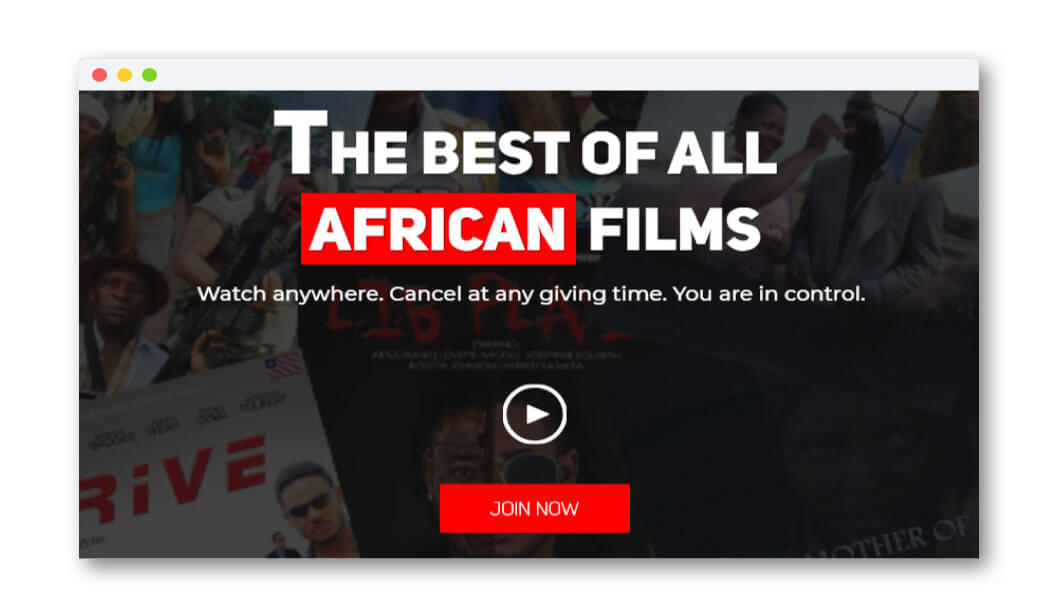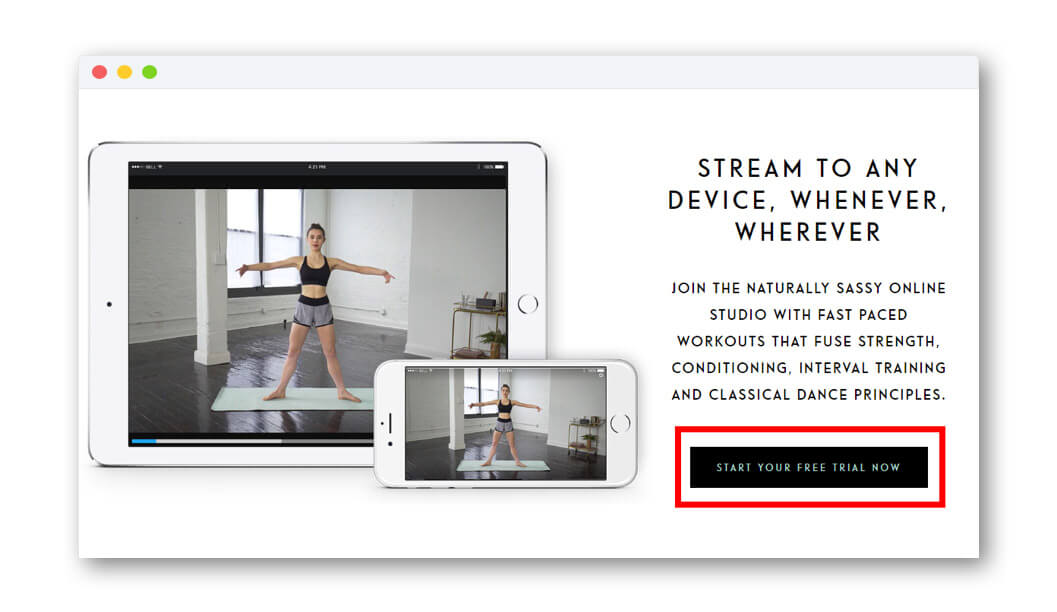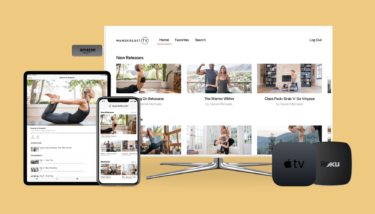If there’s only one thing all content creators have in common, it’s that we’re constantly second-guessing ourselves.
We have these nagging voices in the back of our heads, telling us we missed an important piece of the puzzle, and that whatever it is we’re working on is just not going to work.
As content creators ourselves – and from working with hundreds of others – we know how hard and confusing it can be. But we also know how much easier our lives can get when we have real data to base our content decisions on. All of a sudden, we don’t feel like we’re shooting in the dark anymore.
Which is why we’ve gone ahead and found the following information for you.
We asked our developers and content analysts to look at our 1.1 million OTT app subscribers and give us the most important OTT content trends of 2018 and how to use this data to your advantage in 2019.
With this data, you can make better decisions, choose your content strategy and look for areas of growth in your business. All while knowing you’ve made a data-based decision you can trust in.
Sounds good? Well, let’s just dive right in then…
How This Data was Collected and Analyzed
Uscreen provides OTT platforms to online content creators – Uscreeners, as we like to call them. That means the 1.1 million “subscribers” we refer to in the post are, really, our customers’ customers.
These are real people who are actively paying for, and using, OTT content and services offered by Uscreeners. We’ve taken their data as a whole group to determine the statistics you’ll find in this post. Where needed, we’ve added third-party studies and data to add context and linked to their sources.
We’ve also peeked behind the curtain of our own customers’ businesses to see which trends, habits, and offers are helping them grow and thrive in the OTT app space. Remember, we refer to these people as “Uscreeners” in the analysis, and to their customers as “subscribers”.
Now, we’re presenting this analysis to you in a clear and concise way for you to digest and use in the development of your OTT business. We’ve even added a little section after each data point to tell you how to apply it.
If you have any questions about any of the data, feel free to comment on this post, or ask us on Linkedin, Facebook or Twitter, and we’ll get back to you!
4 Key Takeaways From 1.1 Million Subscribers
Below is an espresso-shot sized summary of our analysis. If you just want a quick glance at 2018’s major OTT content trends, then look no further.
If you want the full story, you can click the accompanying link, and it’ll take you right through to it.
- OTT content is now global. Uscreen subscribers can be found in 188 countries, and 330,000 subscribers are located outside of North America and Western Europe. (Here.)
- OTT content can lead to 30% growth. We’ve repeatedly seen Uscreeners’ businesses grow 30-60% in size and revenue by adding streaming content. (Here.)
- Education > Entertainment. 50% of our subscribers pay for educational content, in comparison to just 17% who pay for entertainment. (Here.)
- You need to be on Roku. If you have a TV-formatted product, Roku is the most popular plug-in OTT device, with 8% of the total user share. (Here.)
Read on to find more detailed insights and other findings from our 1.1 million subscriber analysis.
1. OTT Audiences Can Be Found In 95% Of Countries
We found Uscreen subscribers in 188 different countries (or 95% of the world’s 197 official countries.)
Around 330,000 of these subscribers live in countries outside of North America and Western Europe, with many of them found in what are considered developing countries.
We’re even seeing Uscreeners create platforms designed for people who originate from outside the most common OTT app-usage areas, like Monro TV, who share the best in African entertainment:

This growth is likely thanks to the 33% growth in internet access in these countries over the last 12 years. And, with the introduction of 4G services to many areas, we’ll continue to see OTT content penetration grow over the coming five to ten years, too.
The fastest growing area for OTT content right now is the Asia-Pacific region, which is expected to quadruple its subscribers to platforms like Netflix by 2023.
What This Means For Your Business
The potential market for OTT apps is growing with people from around the globe buying memberships. This data also proves people who have less exposure to OTT content are willing to purchase services outside of Netflix and Hulu.
When creating your content, keep this global audience in mind, and ensure you’re able to accept worldwide payments and have subtitles, captions or translations. You can also review and examine your own audience’s behavior using OTT analytics tools to make sure you’re catering particularly to them.
2. Web Is Still King, But Mobile Is Challenging The Throne
Web still has the largest single percentage of viewers, with 39% of Uscreen subscribers streaming through their browser.
Subscribers are also more likely to sign up for an OTT service apps using their desktop (or laptop) browser. Although m-commerce is growing, many people still feel it’s safer or more trustworthy to make a payment from their computer.
However, beyond that, mobile begins to take the lead.
Mobile devices have the highest combined percentage of users, with iOS and Android making up 45% of the total OTT content streaming audience. That’s around 77,000 more of our 1.1 million subscribers.
Many of those subscribers who purchase online eventually swap to a mobile device as their primary streaming option.
This transition is often dictated by the type of content they subscribe to. People who want entertainment will often switch to their Smart TV after sign up, whereas people who use fitness or educational content are likely to swap to a more portable device.
What This Means For Your Business
Web still forms the cornerstone of content streaming and is likely to be the source of most of your business’s income. Keeping an open, accessible and optimized web-based streaming service is important.
But to keep subscribers, you’ll need to prepare for the transition to other devices after sign up. This will be dictated by the OTT content you create, but it’s worth making sure your content is available and formatted for mobile devices.
3. People Spend Up To 30% More Time Watching OTT
Uscreeners who added OTT app streaming to their existing web-based service saw a growth of 30% in engagement and consumption.
When your content becomes available on more devices, especially those preferred by your current users, people are more likely to engage with your content. You also open yourself up to new subscribers, like the growing number of cord-cutters, who are actively searching for new OTT services to subscribe to.
This data is consistent with the rapid growth of hours watched, and the number of video plays, which has boomed over the last two years.
The average subscriber spends around 27 hours a month watching OTT services, which is consistent with the industry average. This is double the overall increase of playing hours for 2016.
This has also resulted in a 74% growth in total plays of videos. We can safely assume this is due to the increase in popularity of streaming on a mobile device, and the accessibility through Smart TVs.
The easiest way to think of this is that “channel surfing” has become “stream hopping.”
Subscribers have more content at the push of a button, and they have to put in less effort to find it. (In comparison to TV where you have to flick channels and wait for adverts.)
But it’s also possible auto-plays functions have influenced this. When the next video starts after five or six seconds of waiting, it’s easier to stay tuned and dive right into what comes next.
What This Means For Your Business
This growth highlights OTT’s transition towards the defacto viewing option for people at home and on the go. The more the hours go up, the more the industry grows and eats into traditional TVs audience.
Having available OTT apps is becoming a necessity for content creators who want their OTT businesses to survive beyond 2019.
It also likely outlines that there will be a need for you to create more OTT content in the future. Having a larger database, with more videos for your audience to watch, will play in your favor.
It also means content is going to need to become more attention-grabbing and retain its quality. Getting people to choose your content while they stream hop will become an obstacle as more OTT services pop up and playing time increase.
4. Free Trials Convert At 52%
We found 52% of people who signed up for a free trial converted into monthly subscribers.
Free trials, which usually last for a period of seven to 14 days, converted at a higher rate than any other marketing or lead generation strategy we tested.

When a subscriber is already signed up for a service, it’s easier to retain them, especially when payments are taken automatically at the end of the trial period.
This method also allows you to keep the right subscribers for your service, and deter people who would otherwise refund or quit after their first monthly subscription.
What This Means For Your Business
Free trials allow you to build trust and credibility with your potential subscribers.
People are often apprehensive about buying services which are hidden behind a paywall. Even for nominal sums of money, they don’t want to pay only to later find that the service wasn’t a good fit for them.
Free trials give people a taste of your content and a reason to stick around. And, because of the subscription-model style service, the “freeness” of the trial is built into your overall costs.
52% conversions are nothing to sniff at, so if you haven’t already, you should test this and see how it converts in your business.
5. Educational Content Is More Popular Than Entertainment
Uscreeners create more education and fitness content than entertainment. And, it’s by quite a large margin. Here’s how it breaks down:
- Educational – 50% (500,500 total subscribers)
- Fitness – 33% (363,000 total subscribers)
- Entertainment – 17% (187,000 total subscribers)
This means there is a large audience of 863,500 people who are actively paying for non-entertainment content. And, they’re streaming a lot of it.
Magic Stream, an educational platform for magicians, reports their user’s stream over 130 days of content each month. That’s 3120 hours of content each month!
But why is this statistic important?
Because it shows a shift in mindset about how people view OTT content. Subscribers are willing to look beyond entertainment to consume other forms of content that are often more instructional and lifestyle related.
Living rooms are becoming Yoga studios. Bedrooms become classrooms. Train journeys, bus rides, and waiting rooms become personal development seminars.
What This Means For Your Business
If you create educational or fitness content, there is a growing desire for this to be available on mobile devices and Smart TVs.
Although it’s tempting to make your online school a web-only feature, this data indicates there is an active audience looking for education on their favorite devices. Now is the time to get into the OTT space before it becomes more crowded.
6. When In Doubt, Make A Roku App
Roku channels (apps) are the most popular method of streaming for Uscreen subscribers on their TV, with 8% of our total user base.
Although Roku may not be a household name, at least not in the same way Apple, Google and Amazon are, they are the world’s leading provider of OTT television devices.
What This Means For Your Business
Roku may be the best place for you to launch your first OTT television app.
They have a large audience, which is already converted to the benefits of OTT apps, and you can reach the most people with one single app. Once you test and perfect your offering here, you can begin to offer it on other platforms.
You can read our guide here on how to start a Roku channel.
That’s All Folks!
We hope you’ve found the data in this article useful and practical for you to use in your OTT business. Combine it with your gut feeling and you can’t go wrong.
And, if you have any questions about our OTT content analysis, let us know in the comments!



